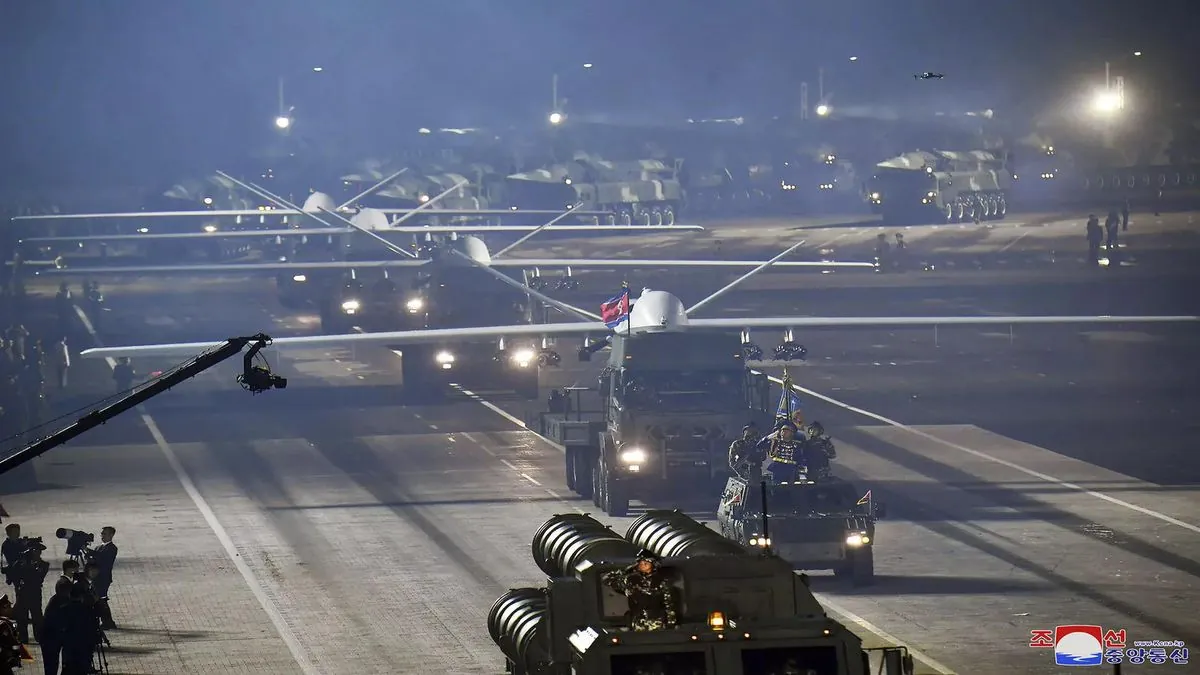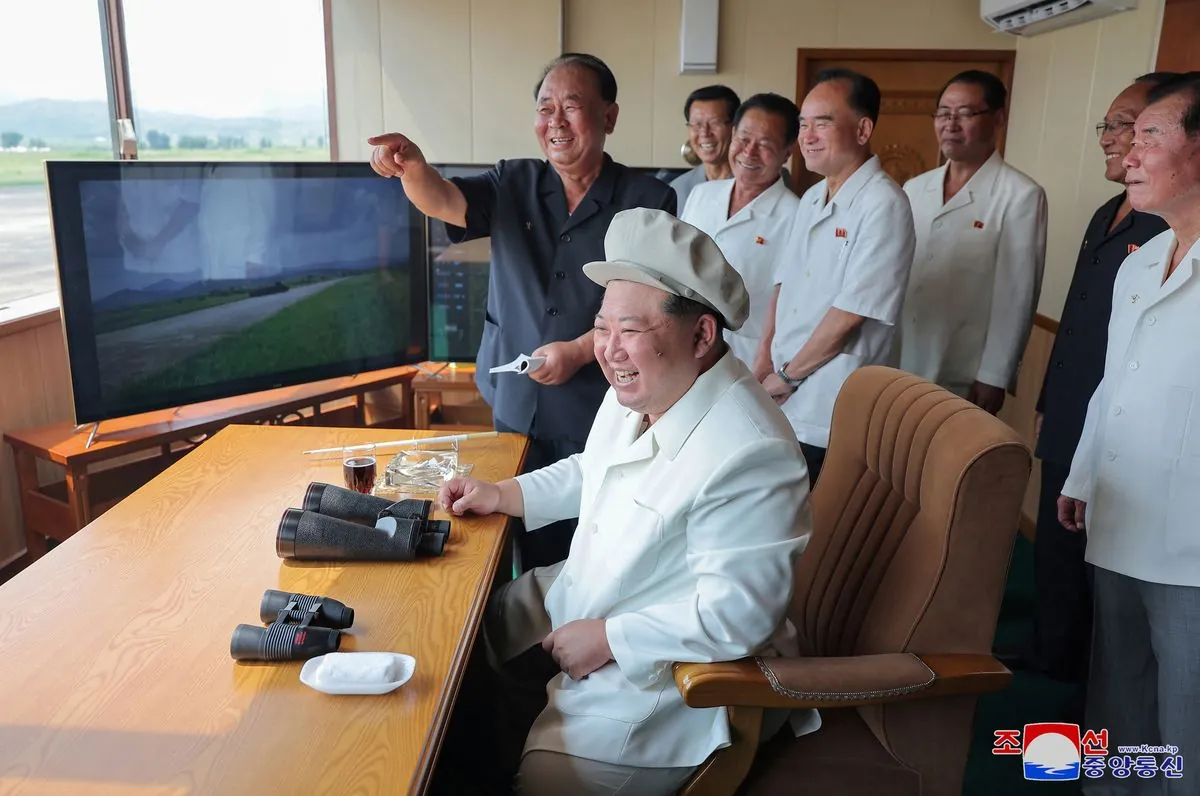North Korea Ramps Up Suicide Drone Development for Military Enhancement
North Korean leader Kim Jong-un urges production of diverse suicide drones for tactical and strategic use. South Korea responds with plans for laser defense systems amid concerns over airspace vulnerabilities.

Kim Jong-un, leader of North Korea, has recently emphasized the need for increased development and production of suicide drones to enhance the country's military capabilities. This directive comes as part of North Korea's ongoing efforts to strengthen its armed forces, reflecting the nation's "Songun" or "military-first" policy.
During a visit to the Drone Institute of North Korea's Academy of Defence Sciences, Kim observed demonstrations of new suicide drones. These unmanned aerial vehicles (UAVs) successfully navigated preset routes and destroyed designated targets, including a mock tank. The event showcased the regime's progress in drone technology, a field that has gained significant attention in modern warfare.
Kim emphasized the importance of developing various types of suicide drones for different military applications:
- Tactical infantry use
- Special operation units
- Strategic reconnaissance
- Multi-purpose attacks
- Underwater suicide attacks
The North Korean leader also stressed the need to incorporate artificial intelligence into unmanned vehicles, indicating a push towards more advanced and autonomous systems.

This focus on drone development aligns with North Korea's broader military strategy. The country maintains the world's largest standing army relative to its population size of approximately 25 million people. Despite facing UN sanctions since 2006 due to its nuclear program, North Korea continues to prioritize military advancements.
The use of loitering munitions, which can remain airborne until a specific target is located, has been observed in recent conflicts in Ukraine and the Middle East. These drones, designed to crash into targets with explosive payloads, represent a growing trend in modern warfare.
South Korea, still technically at war with the North since the 1950-53 conflict ended in an armistice, has expressed concern over these developments. The vulnerability of South Korean airspace was highlighted in December 2022 when five North Korean drones crossed the border, prompting military response but evading destruction.
In response to the growing drone threat, South Korea's National Defence Acquisition Programme Administration (DAPA) has announced plans to deploy laser weapons by the end of the year. These "Star Wars"-like lasers are designed to melt the surface of incoming drones, causing internal components to ignite.
The Joint Chiefs of Staff (JCS) of South Korea has noted potential similarities between North Korea's new drones and models like Russia's ZALA Lancet and the Iranian-designed Shahed. This observation comes amid concerns of increased military cooperation between North Korea and Russia, with accusations of Pyongyang supplying munitions to Moscow in exchange for advanced technology.
"We understand that some gifts (drones) were given in an exchange between North Korea and Russia in the past...We need to analyse various measures to see if those have improved performance."
As tensions continue on the Korean Peninsula, the development of these drone technologies represents a new chapter in the ongoing military standoff. The situation underscores the complex geopolitical dynamics in the region, with North Korea's pursuit of military advancements contrasting sharply with international efforts to maintain peace and stability.


































